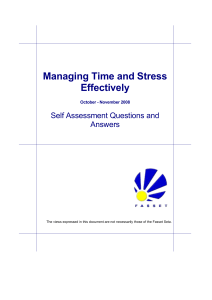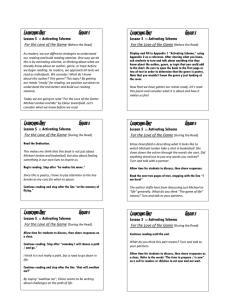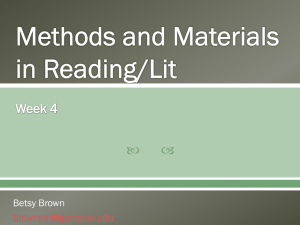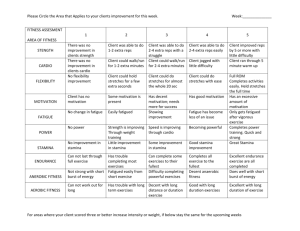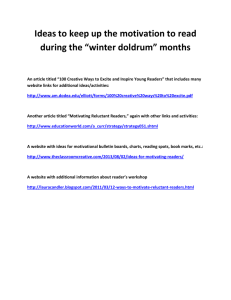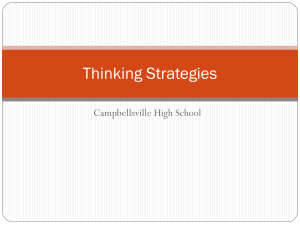Test Talk - RPS Monthly Meetings
advertisement
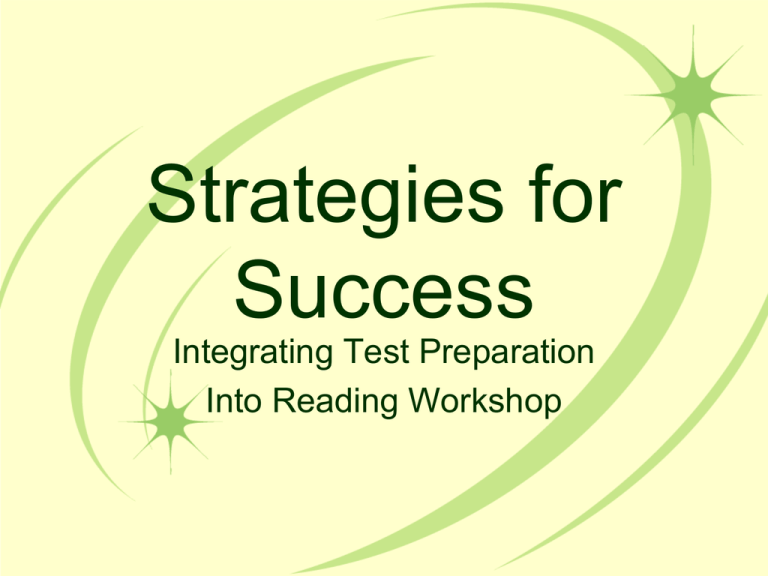
Strategies for Success Integrating Test Preparation Into Reading Workshop Three Beliefs Successful test takers first have to be smart readers. Successful test takers need to be able to translate the unique language of the test. Learning how to be a successful test taker can be fun. Hope is not a strategy How can we help our students show what they know on standardized tests? We can create a purposeful, integrated test-taking curriculum. Students must learn the hyper-English that is part of test taking. What is test talk? Test talk is the specific language needed to decode the test. We often ask our students to practice, practice, practice without ever teaching. “We as educators know that practice is not preparation. Skills must be taught in a concrete, meaningful way before they can be practiced.” page 9, Test Talk What skills are needed? Translate the test writers’ formal English (test talk) into kid talk Recognize and categorize questions into concepts taught in class Understand and successfully manipulate the format of the test Use test-taking strategies to be proactive testtakers Stamina to sustain concentration General Reading Strategy Lessons Reading is thinking Activating schema Using the author’s clues to recognize important information Identifying and following directions Rereading saves the day Reading and thinking stamina Test-Specific Strategy Lessons Navigating the structure of standardized tests Eliminating answers that don’t match Active listening Smart test takers aren’t necessarily sure of every single answer, but they are sure to read each question carefully, use strategies, make the very best answer choice, and move on confidently. Activating Schema Warming-up the brain Setting a purpose for reading Alerting the brain to seek information Turn the wondering brain on Conversations in my head Visualization What’s It All About? Finding The Main Idea Determining importance - finding the main idea can be tricky because it is not usually written right in the text. We must read, then use our schema with the text to infer the main ideas. What is the text talk for main idea questions? Anchor Chart - Main Idea Synonyms – Passage – Text – Story Main Idea Test Talk – – – – Theme Mostly about Importance Summarize Motives in Messages: Identifying Author’s Intent The author most likely wrote this passage to . . . The author both entertains and informs the reader by . . . What was the author’s main purpose for writing this article? The author included this last paragraph because it . .. In the last paragraph the author uses words that . . The reason the author uses the phrase “cool as a cucumber” is to . . . Test Talk - Author’s Intent Explain Teach Amuse Persuade Entertain Compare Demonstrate Be humorous Frighten Give information Make you laugh Describe Prove Warn Studying Words Students must learn how to construct and deconstruct words - essentially know how words work. Questions like ~ In which word does -ly mean the same as it does in lovely? QAR Teach Author and Me Almost all passage related questions on the SOL test require students to use clues from the author and make inferences. Reading Between the Lines: Inferring to Build Meaning Text + Schema = Inference To infer is to build meaning Inference is a sophisticated intellectual process that occurs at the junction of a reader’s background knowledge and what is stated in the text or pictured in the illustrations Inferring - Implicit vs. Explicit Defining unknown words Finding main ideas Themes Morals Making predictions Identifying characters feelings & traits “Crunch Time” with Strategic and Intensive Readers Decoding is an issue, so accurate reading is an issue. Words read per minute is often significantly below grade expectancy. Comprehension is compromised when accuracy and fluency are areas of weakness. Reading Research Helps . . . If students feel successful and competent in their ability to read, they are more likely to persist in the face of challenges (Snow, Burns, & Griffin, 1998). SO…. Decoding - daily practice reading and decoding text out loud. This must be supportive practice. Reading must occur all day long practice will lead to improvement. Stamina is critical for the day of the test. I have to read all these stories! Fluency impacts stamina. The last passages may only be skimmed. Students are reluctant to re-read because the task is so labor and time intensive. Relax! School environments need to be positive. Students need to believe in themselves. This happens when you believe in them. Embracing the Testing Challenge “I’m not scared because I know what it’s going to be like and I know what the words mean. I also know what to do if I get stuck. I feel excited instead of scared.”
